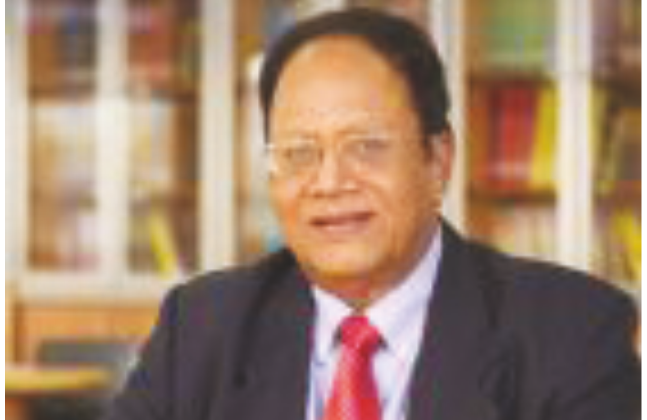[vc_row][vc_column][vc_column_text]
With a humble beginning in the 1960s as a distributor for Bosch products, KSH Infra has over the years grown and diversified into warehousing and logistics services. Kushal S. Hegde, Chairman, KSH Group, details on the company’s production and logistics operations, as they aggressively plan to expand into 3PL and industrial parks
Q Tell us about your manufacturing operations for producing copper conductors/ products? To which international markets do you export your products? Which seaports do you use?
KSH was incorporated in July, 1979. The company, based in Pune, manufactures insulated copper conductors, which include Continuously Transposed Cables (CTC), Paper Insulated Copper Conductors (PICC), wrapped and enameled rectangular copper magnet winding wires and other specialty conductors. The products of the company find application in all types of transformers, large motors, hydro generators, alternators and wind mill generators. KSH has two manufacturing facilities, one in Taloja, Mumbai and one in Chakan, Pune.
The company undertakes manufacturing of these wires on a customized basis and supplies them to the domestic as well as international clients located in the Asia & Europe continents. KSH uses Nhava Sheva (JNPT) port for export.
Q What is the raw material used in your manufacturing plants?
How do you source it? KSH uses variety of raw material i.e. copper rods, insulating paper, enamel etc. KSH source this from certified Indian suppliers as well as certified International suppliers.
Q KSH International started as an authorized centre for Bosch products, what led you to diversify into the logistics segment?
Our group company Waterloo Motors started as a Bosch products distribution and servicing agency. We have been associated with Bosch for more than 50 years now. In the year 1999, with support from Bosch we established a logistics company to service their captive requirements in the Pune region. With this small venture our journey in logistics began.
Q Which industries and hinterland does the Talegaon ICD serve? How has been the business performance in the past year?
Our ICD in Talegaon serves the industrialized region of Pune, and hinterland Maharashtra such as Kolhapur, Satara, Aurangabad, Nagar and Sholapur. We have received support from all major shipping lines with all of the majors extending support upto Pune i.e. CMA, Mearsk, MSC, NYK, OOCL etc., While the initial years have been a struggle establishing our business model, the past few years have been good with considerable pick up in volumes. We have handled in excess of 50,000 TEUs in FY 2016-17 and now deal with some of the largest MNCs in the region such as Bridgestone, Tetrapak, Volkswagen, GM, Mahindra, GE, Sakaal, Pudumjee etc., We have also been the recipient of the prestigious best custodian award from Indian Customs for 3 years running now, which is one of the most treasured awards that we have received for our services over the years.
Q The government is pushing major ports to go for Direct Port Delivery. In this scenario what is the survival strategy of ICDs and CFSs?
While Direct Port Delivery has had a major impact on the CFS business in the Mumbai area, we have not been very badly affected by it. Our business being primarily from end customers/ manufacturers, and not shipping line nominated, we tend to have closer relationships with our customers and they are using our services for endto- end logistics movement. While Direct Port Delivery is going to be extremely beneficial to large importers and is a great initiative by the Customs Department, its also imperative that other allied infrastructure such as the roads leading upto JNPT are also improved. In view of Direct Port Delivery coming in, the Ministry also needs to take a more conservative view in opening of new CFSs / ICDs as substantial capacity still lies idol across various facilities in the JNPT / Pune area.
Q With the growing e-commerce market demand for 3PL is growing. How are you capitalizing on this trend?
We are actively looking at expanding our 3PL business across multiple markets Pan India. We would be looking at setting up shared services in Pune, Bangalore, Chennai and NCR to begin with. Our focus currently is primarily on the engineering sector.
Q Pune and Chennai are said to lead in terms of demand for warehousing post GST roll out. How do you see the market evolve?
Our INFRA segment under which we are building logistics / industrial parks is very actively looking at expanding. We are currently building over 1 million square feet in Chakan and the project should be completed by the first quarter of 2018. We have firmed up plans to expand the footprint to over 5 million square feet by 2022 in the Pune & Mumbai region. We see considerable demand in this segment and the recent transaction of CPPIP forming a JV with IndoSpace is a benchmark deal and gives an impetus of the growing importance of this sector going forward. Having said that, we feel the market for warehousing infrastructure post GST will boom and we are in an ideal place to capitalize on the same.
Q What are your expansion plans in the logistics and warehousing sector?
As indicated, we are extremely bullish on the warehousing sector and will be doing two levels of expansion. We expect to ramp up our INFRA business which is a developer of logistics / industrial parks from 1 million square feet to 5 million square feet in the next 4 years. We also expect to ramp up our 3PL platform on a Pan India basis through the establishment of shared services in Pune, Bangalore, Chennai & NCR.
Q As a logistics service provider what challenges do you face?
I think some of the biggest challenges we face are on getting qualified, committed and trained manpower. Secondly, the transport network which happens to be the heart of any logistics operation seems to be a considerable struggle i.e. sourcing skilled drivers, maintaining a large fleet, pilferage etc., These are areas that we expect will get substantially impacted in a positive manner by the implementation of technology. Our focus will be on adopting automation, and technologies that will bring greater transparency to these operations.
[/vc_column_text][/vc_column][/vc_row]








